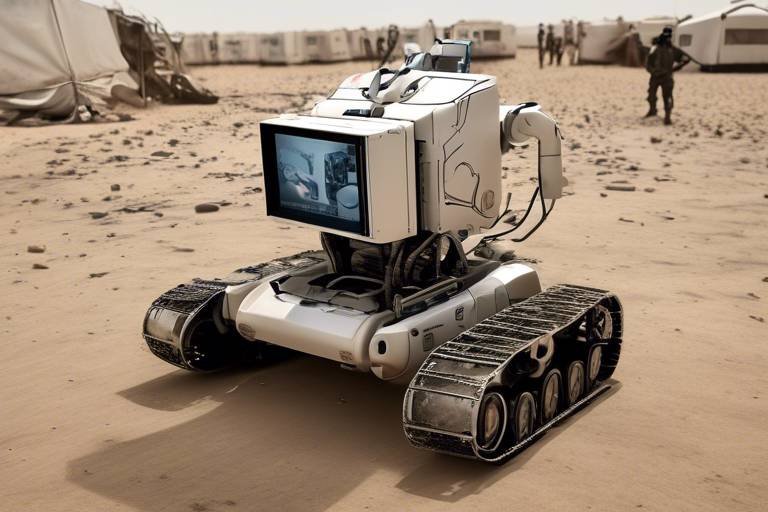How the Robotic Systems are Shaping Future Military Strategies
The landscape of warfare is undergoing a seismic shift, and at the heart of this transformation lies robotic systems. These technological marvels are not just tools; they are reshaping the very fabric of military strategies across the globe. Imagine a battlefield where decisions are made in microseconds, where human lives are preserved through the use of advanced machines, and where the chaos of war is met with calculated precision. This is not the distant future—this is happening now.
As nations invest heavily in the development and integration of robotic systems, the implications are profound. From unmanned aerial vehicles (UAVs) that dominate the skies to ground robots that navigate treacherous terrains, the military is leveraging technology to enhance operational effectiveness. These systems offer a myriad of advantages, including increased surveillance capabilities, reduced risk to personnel, and improved logistics. But what does this mean for the future of military engagements? Are we witnessing the dawn of a new era in warfare?
One of the most striking aspects of robotic systems is their ability to operate in environments that are too dangerous for human soldiers. Consider the scenario of a bomb disposal unit. Traditionally, this would require a team of highly trained personnel to assess and neutralize threats. Now, with the advent of ground robots, these tasks can be performed remotely, significantly reducing the risk of casualties. This shift not only enhances safety but also allows military personnel to focus on more strategic tasks.
Moreover, the integration of artificial intelligence (AI) into military robotics is a game changer. AI enables these systems to analyze vast amounts of data, recognize patterns, and make autonomous decisions. This capability can lead to faster response times and more effective strategies. However, it also raises critical questions about accountability and the ethical implications of allowing machines to make life-and-death decisions. Are we ready to entrust such power to robots, or do we risk losing our moral compass in the fog of war?
As we look towards the future, it’s essential to consider the challenges that accompany these advancements. While robotic systems promise enhanced capabilities, they are not without limitations. Technical failures, cybersecurity threats, and ethical dilemmas present significant hurdles that military strategists must navigate. The potential for collateral damage, the lack of accountability, and the reliability of autonomous systems are pressing concerns that need to be addressed.
In conclusion, the integration of robotic systems into military strategies is not merely a trend; it represents a fundamental shift in how wars are fought. As we embrace these technologies, we must also engage in critical discussions about their implications. The future of warfare is being rewritten, and it is up to us to ensure that this new chapter is guided by ethical considerations and a commitment to preserving human dignity in the face of technological advancement.
- What are military robotic systems? Military robotic systems are automated machines designed for various tasks in warfare, including surveillance, logistics, and combat.
- How do UAVs enhance military operations? UAVs provide real-time intelligence, conduct reconnaissance missions, and carry out targeted strikes without risking human lives.
- What ethical concerns are associated with military robotics? Key ethical concerns include accountability for actions taken by autonomous systems and the potential for collateral damage during operations.
- Can robotic systems replace human soldiers? While robotic systems can perform many tasks, they are designed to complement human soldiers rather than replace them entirely.
- What is the future of military robotics? The future will likely see increased integration of AI, more advanced autonomous systems, and ongoing discussions about the ethical implications of their use in warfare.
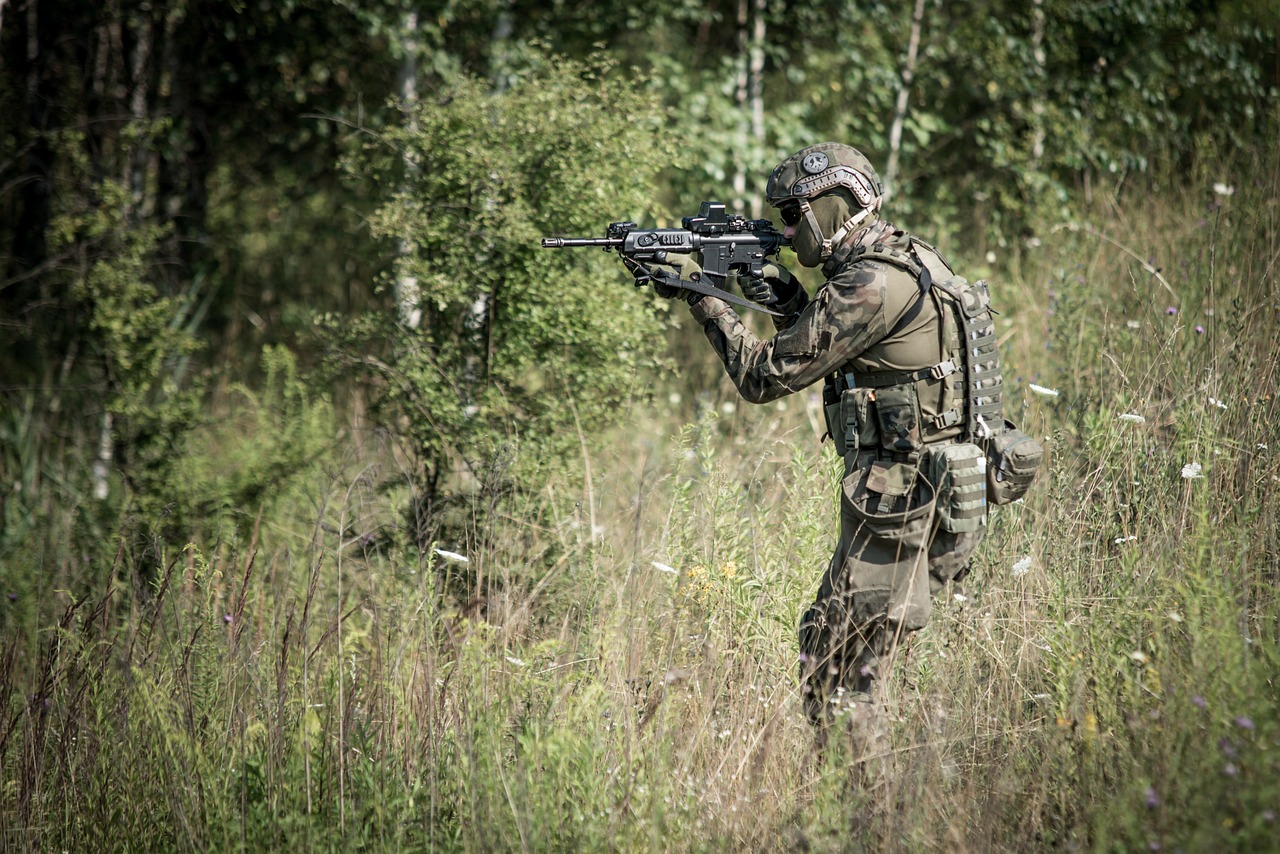
The Evolution of Military Robotics
The journey of military robotics is nothing short of fascinating, evolving from rudimentary automated systems to the sophisticated unmanned vehicles we see today. In the early days, military technology was primarily focused on enhancing human capabilities, often relying on mechanical devices that performed simple tasks. These early innovations laid the groundwork for what would become a revolution in warfare. Imagine a time when the most advanced technology was a simple remote-controlled vehicle; now, we can deploy drones that can fly autonomously and gather real-time intelligence.
As we moved into the late 20th century, the advent of computers and advanced materials led to significant breakthroughs in military robotics. The introduction of unmanned aerial vehicles (UAVs) marked a turning point, allowing military forces to conduct surveillance without risking lives. These UAVs were initially used for reconnaissance, but their capabilities quickly expanded, enabling them to perform various missions, including combat operations. The technological advancements during this period were staggering, as they not only improved the efficiency of military operations but also changed the very nature of warfare.
Throughout the 21st century, the evolution of military robotics has been accelerated by advancements in artificial intelligence and machine learning. Today, we see robots that can make autonomous decisions, analyze vast amounts of data, and even engage in combat scenarios with minimal human intervention. This shift raises critical questions about the future of warfare and the role of human operators. Are we heading towards a battlefield dominated by machines? Or will there always be a need for human oversight? The answer is complex, as military robotics continue to evolve rapidly.
To illustrate the evolution of military robotics, consider the following table that highlights key milestones:
| Year | Milestone | Description |
|---|---|---|
| 1960s | Early Automation | Introduction of basic automated systems in military applications. |
| 1980s | First UAVs | Deployment of early unmanned aerial vehicles for reconnaissance. |
| 2000s | Combat Drones | Increased use of drones for targeted strikes and surveillance. |
| 2010s | AI Integration | Incorporation of artificial intelligence in military robotics. |
| 2020s | Autonomous Systems | Development of fully autonomous military robots. |
As we look to the future, it's clear that military robotics will continue to play a pivotal role in shaping strategies and operations. The integration of advanced technologies will likely lead to even more sophisticated systems capable of performing complex tasks with minimal human intervention. However, with these advancements come significant ethical considerations and challenges that must be addressed to ensure that the deployment of military robots aligns with international laws and moral standards.
- What are the key benefits of military robotics? Military robotics enhance operational efficiency, reduce risks to human lives, and provide real-time intelligence.
- How do military robots make decisions? Many military robots utilize artificial intelligence to analyze data and make autonomous decisions based on pre-programmed algorithms.
- What are the ethical concerns surrounding military robotics? Ethical concerns include accountability for actions taken by autonomous systems and the potential for collateral damage during operations.
- Will robots replace human soldiers in the future? While robots may take on more roles in military operations, human oversight will likely remain essential for strategic decision-making.
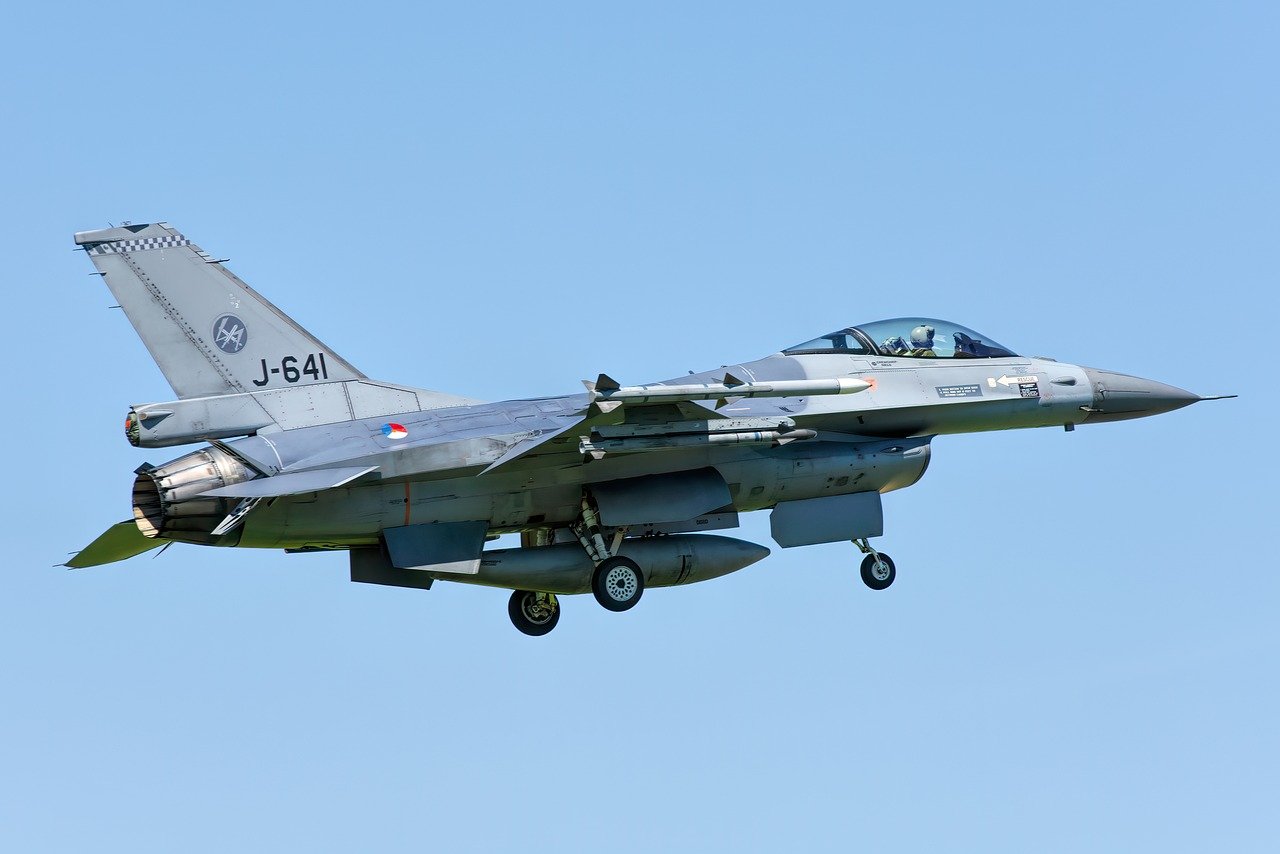
Types of Military Robots
The landscape of modern warfare has been dramatically transformed by the introduction of military robots. These advanced machines are not just tools; they are game-changers that enhance operational efficiency and effectiveness on the battlefield. From unmanned aerial vehicles (UAVs) soaring through the skies to ground robots navigating treacherous terrains, the types of military robots are diverse and specialized. Each type serves a unique purpose, allowing military forces to conduct operations with greater precision and safety than ever before.
One of the most prominent categories of military robots is the unmanned aerial vehicle (UAV). These flying machines have revolutionized how surveillance and reconnaissance missions are conducted. Imagine being able to gather real-time intelligence from above without putting a single soldier at risk. UAVs are equipped with advanced sensors and cameras, enabling them to relay crucial information back to command centers. Their ability to operate in hostile environments makes them invaluable assets in modern military operations.
Within the realm of UAVs, there are two primary types: combat drones and reconnaissance drones. Combat drones are designed for targeted strikes and precision warfare, allowing military forces to eliminate threats with minimal collateral damage. These drones are armed and can engage in combat scenarios, providing a strategic advantage by striking from a distance. On the other hand, reconnaissance drones focus on gathering intelligence rather than engaging in combat. They provide critical situational awareness to commanders, enhancing decision-making processes in real-time.
Combat drones have become increasingly sophisticated, equipped with cutting-edge technology that allows for precision targeting. However, their use raises ethical questions regarding accountability and the potential for collateral damage. As these drones operate with a degree of autonomy, the role of human pilots is evolving. No longer are they just operators; they are now decision-makers who must weigh the consequences of their actions on the battlefield.
On the flip side, reconnaissance drones are crucial for gathering intelligence. These machines can fly for extended periods, covering vast areas while collecting data. Their real-time surveillance capabilities enhance situational awareness, allowing military leaders to make informed decisions based on accurate information. The technology behind these drones continues to advance, with improvements in data processing and transmission, making them even more effective in modern combat scenarios.
While UAVs dominate the skies, ground robots are making significant strides on the battlefield as well. These robots are employed for various tasks, including logistics, bomb disposal, and reconnaissance missions. Their versatility is astounding; for example, they can transport supplies to soldiers in dangerous areas, reducing the risk of human casualties. Moreover, ground robots equipped with advanced sensors can safely neutralize explosives, protecting military personnel from harm.
Despite their advantages, deploying ground robots presents challenges. Terrain navigation can be complex, especially in war-torn areas where the environment is unpredictable. However, ongoing advancements in robotics and AI are continuously improving the capabilities of these machines, making them more reliable and efficient.
Lastly, we cannot overlook the role of underwater drones, also known as unmanned underwater vehicles (UUVs). These robots are essential for naval operations, conducting tasks such as mine detection and reconnaissance beneath the waves. The ocean is a vast and often treacherous environment, and UUVs allow military forces to gather intelligence without risking human lives. They are equipped with sonar and other technologies that enable them to navigate and operate effectively underwater.
In summary, the types of military robots—ranging from UAVs to ground robots and underwater drones—are reshaping military strategies. Each type brings unique advantages that enhance operational capabilities while minimizing risks to human personnel. As technology continues to advance, we can only imagine the innovative roles these robots will play in future military operations.
- What are military robots used for? Military robots are used for various purposes, including surveillance, reconnaissance, logistics, and bomb disposal.
- How do UAVs enhance military operations? UAVs provide real-time intelligence and can conduct missions without risking human lives, making them invaluable in modern warfare.
- What are the ethical concerns surrounding military robots? Ethical concerns include accountability for actions taken by autonomous machines and the potential for collateral damage during operations.
- What advancements are being made in military robotics? Ongoing advancements include improvements in AI, machine learning, and sensor technology, enhancing the capabilities of military robots.

Unmanned Aerial Vehicles (UAVs)
Unmanned Aerial Vehicles, or UAVs, have dramatically transformed the landscape of modern warfare. These advanced machines are not just tools; they are game-changers in the realm of military operations. Imagine a bird's-eye view of the battlefield, where information flows seamlessly and decisions can be made in real-time without putting soldiers in harm's way. UAVs have made this vision a reality, offering unparalleled advantages in surveillance and reconnaissance missions.
One of the most significant benefits of UAVs is their ability to gather intelligence without risking human lives. Traditional reconnaissance missions often require manned aircraft, exposing pilots to enemy fire and various dangers. In contrast, UAVs can soar above hostile territories, capturing high-resolution images and video footage while remaining out of reach. This capability not only enhances situational awareness but also allows military strategists to make informed decisions based on real-time data.
The deployment strategies for UAVs are as diverse as their applications. They can be launched from land, sea, or air, making them incredibly versatile. For instance, predator drones are often used for long-endurance missions, while smaller UAVs can be deployed for quick reconnaissance tasks. This flexibility allows military forces to adapt to various operational environments effectively. Here's a quick look at some of the key roles UAVs play in military operations:
- Surveillance: Continuous monitoring of enemy movements and activities.
- Target Acquisition: Identifying and locating targets for precision strikes.
- Battlefield Assessment: Evaluating damage and troop movements post-engagement.
The impact of UAVs on aerial combat cannot be overstated. As they become more sophisticated, the tactical landscape is shifting. UAVs equipped with advanced sensors and artificial intelligence can analyze data and make decisions faster than human operators. This evolution raises new questions about the future of aerial combat: will pilots become obsolete, or will they transition into roles that involve overseeing multiple UAVs simultaneously?
Moreover, the integration of UAVs into military strategies has led to a significant change in how conflicts are approached. The ability to conduct precision strikes with minimal collateral damage is a double-edged sword. On one hand, it allows for targeted operations that can neutralize threats effectively; on the other hand, it raises ethical questions about the implications of remote warfare. As military forces increasingly rely on UAVs, the challenge will be to balance operational efficiency with moral responsibility.
In conclusion, UAVs represent a pivotal advancement in military technology, reshaping how wars are fought and strategies are devised. As we look to the future, the role of unmanned systems is expected to expand, integrating even more advanced technologies like artificial intelligence and machine learning. The question remains: how will these innovations continue to redefine the battlefield, and what ethical frameworks will be necessary to guide their use?
- What are UAVs used for in military operations?
UAVs are primarily used for surveillance, reconnaissance, target acquisition, and precision strikes, providing real-time intelligence and minimizing risk to human life.
- How do UAVs enhance situational awareness?
By providing high-resolution imagery and video footage from above, UAVs allow military strategists to make informed decisions based on real-time battlefield data.
- What are the ethical concerns surrounding the use of UAVs?
Ethical concerns include accountability for strikes, the potential for collateral damage, and the implications of remote warfare on traditional combat roles.
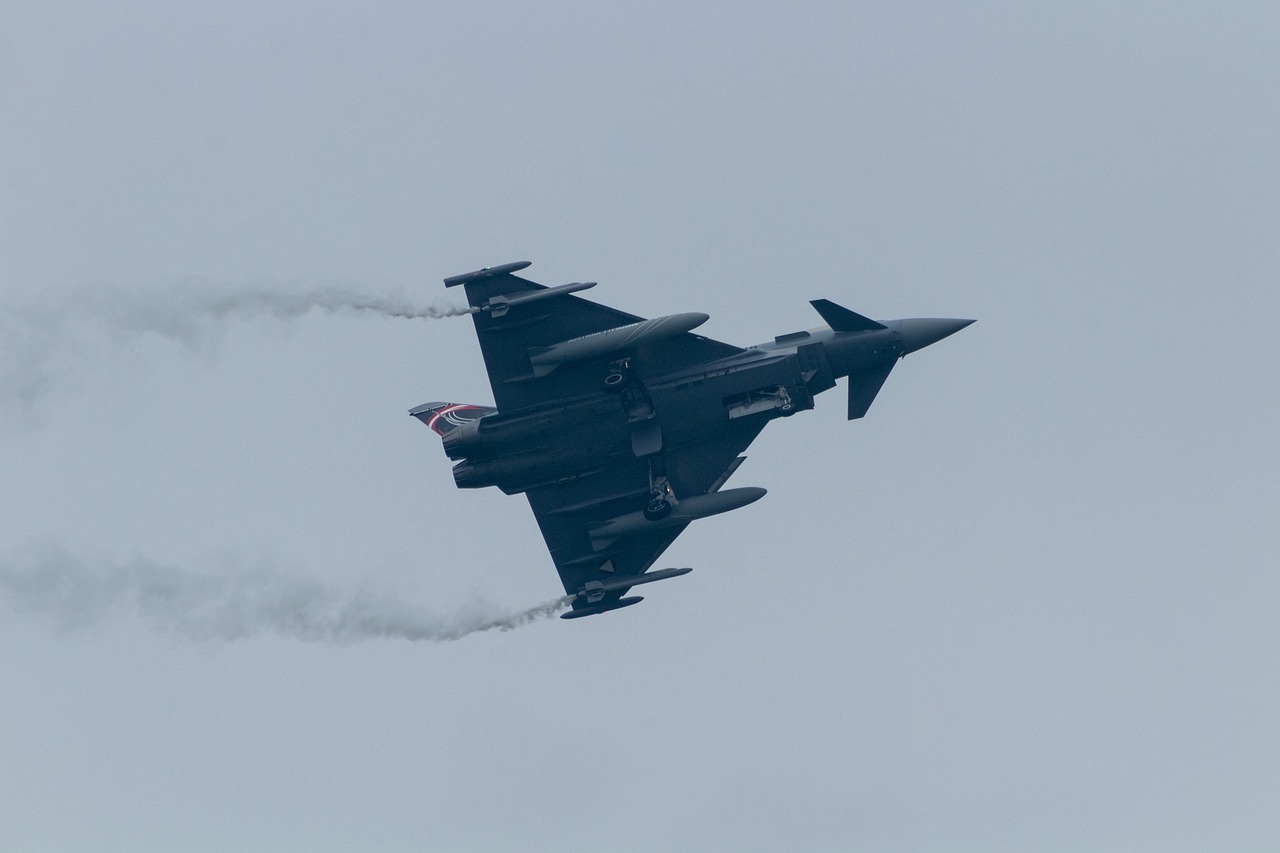
Combat Drones
Combat drones, often referred to as unmanned combat aerial vehicles (UCAVs), have dramatically changed the landscape of modern warfare. These remarkable machines are not just flying robots; they represent a significant leap in military technology, allowing for precision strikes and enhanced operational capabilities without putting human pilots in harm's way. Imagine a world where the pilot is safely stationed thousands of miles away, controlling a drone that can execute complex missions with pinpoint accuracy. Sounds futuristic, right? But this is the reality of combat drones today.
One of the most compelling aspects of combat drones is their ability to conduct targeted strikes with minimal collateral damage. Unlike traditional airstrikes that rely on manned aircraft, drones can hover over a target for extended periods, gathering intelligence and ensuring that the timing of an attack is just right. This capability is crucial in situations where civilian lives might be at risk. The precision of these drones is not just a matter of technology; it’s about saving lives and making warfare more humane.
However, the use of combat drones is not without its controversies. The ethical implications of deploying such technology in warfare raise significant questions. For instance, who is held accountable when a drone strike goes wrong? Is it the operator, the commanding officer, or the technology itself? These dilemmas are at the forefront of discussions about the future of military engagement. Furthermore, as drones become more autonomous, the line between human decision-making and machine execution blurs, leading to even more complex ethical considerations.
To illustrate the effectiveness of combat drones, consider the following table that outlines their key advantages:
| Advantage | Description |
|---|---|
| Cost-Effectiveness | Combat drones are generally less expensive to operate than manned aircraft, reducing overall military expenditure. |
| Reduced Risk | They eliminate the risk to human pilots, allowing for operations in hostile environments without loss of life. |
| Real-Time Intelligence | Drones can provide immediate surveillance and reconnaissance, enhancing situational awareness on the battlefield. |
| Precision Strikes | Advanced targeting systems allow for highly accurate strikes, minimizing collateral damage. |
As we look to the future, the role of combat drones will likely expand even further. With advancements in artificial intelligence and machine learning, these drones could become even more autonomous, capable of making split-second decisions in combat scenarios. However, this also raises the stakes regarding accountability and the ethical implications of allowing machines to make life-and-death decisions.
In conclusion, combat drones are reshaping military strategies by providing enhanced capabilities while also raising significant ethical questions. As technology continues to evolve, it will be crucial for military leaders and policymakers to navigate these challenges thoughtfully, ensuring that the deployment of such powerful tools aligns with international laws and ethical standards.
- What are combat drones used for? Combat drones are primarily used for targeted strikes, surveillance, reconnaissance, and intelligence gathering in military operations.
- How do combat drones differ from traditional aircraft? Unlike traditional aircraft, combat drones are unmanned and can be operated remotely, reducing risk to human pilots.
- What are the ethical concerns surrounding combat drones? Ethical concerns include accountability for strikes, the potential for collateral damage, and the implications of autonomous decision-making.
- Will combat drones replace manned aircraft? While combat drones are becoming increasingly prevalent, it is unlikely they will completely replace manned aircraft due to the unique advantages that human pilots bring to complex situations.

Reconnaissance Drones
are a cornerstone of modern military operations, providing critical intelligence that shapes battlefield strategies. These unmanned aerial vehicles (UAVs) are equipped with advanced sensors and cameras that allow them to gather real-time data from high altitudes, ensuring that military forces have the information they need to make informed decisions. Imagine being able to see the battlefield from above, with the ability to spot enemy movements and assess terrain without putting a single soldier at risk. This is the reality that reconnaissance drones bring to the table.
The technology behind reconnaissance drones has evolved significantly over the years. Initially, these drones were relatively simple platforms, but advancements in sensor technology, data processing, and communication systems have transformed them into sophisticated tools capable of performing a variety of missions. For instance, modern reconnaissance drones can operate in various conditions, from urban environments to rugged terrains, making them incredibly versatile. They can also be equipped with a range of sensors, including infrared cameras, radar, and even signals intelligence equipment, allowing them to gather a comprehensive picture of the battlefield.
One of the most significant advantages of using reconnaissance drones is their ability to conduct surveillance without being detected. Their stealthy design and high-altitude capabilities enable them to fly above enemy radar systems, providing a tactical advantage. This capability allows military planners to monitor enemy movements and gather intelligence over extended periods, which is crucial for anticipating enemy actions and planning counter-strategies. Moreover, the data collected by these drones can be transmitted in real-time to command centers, ensuring that decision-makers have the most current information at their fingertips.
In addition to traditional reconnaissance roles, these drones are increasingly being integrated into network-centric warfare strategies. By connecting reconnaissance drones to other military assets, such as ground troops and naval vessels, commanders can create a comprehensive operational picture that enhances situational awareness. This integration allows for more coordinated responses to threats and more effective allocation of resources on the battlefield.
However, the deployment of reconnaissance drones is not without its challenges. Issues such as data overload can arise when the volume of information collected exceeds the capacity of analysts to process it. Additionally, there are concerns about the security of the data transmitted by these drones, as adversaries may attempt to intercept or jam communication signals. Despite these challenges, the benefits of reconnaissance drones far outweigh the drawbacks, making them an indispensable part of modern military strategy.
In summary, reconnaissance drones are transforming the way military operations are conducted. Their ability to gather real-time intelligence, operate undetected, and integrate with other military assets makes them a powerful tool in the arsenal of modern warfare. As technology continues to advance, we can expect these drones to become even more capable, further enhancing their role in military strategies around the world.
- What are reconnaissance drones used for?
Reconnaissance drones are primarily used for gathering intelligence, conducting surveillance, and assessing battlefield conditions without risking human lives. - How do reconnaissance drones transmit data?
They transmit data in real-time using secure communication channels, allowing military commanders to receive updated information immediately. - Are reconnaissance drones equipped with weapons?
Typically, reconnaissance drones are not armed; their primary function is intelligence gathering. However, some drones can be modified for combat roles. - What are the challenges of using reconnaissance drones?
Challenges include data overload, security risks, and the potential for technical failures during operations.

Ground Robots
Ground robots have emerged as a game-changer on the battlefield, transforming the way military operations are conducted. These versatile machines are designed to perform a variety of tasks, which range from logistics support to bomb disposal and reconnaissance missions. Imagine a scenario where a soldier can send in a robot to investigate a potentially dangerous area, minimizing risks to human life. This is not science fiction; it’s the reality of modern warfare.
One of the most significant advantages of ground robots is their ability to operate in hazardous environments. Whether it’s a war-torn city or an unexploded ordnance site, these machines can navigate terrain that would be perilous for human soldiers. For instance, bomb disposal robots are equipped with advanced sensors and tools to safely disarm explosives, significantly reducing the risk of casualties. These robots can be remotely operated or even programmed to carry out tasks autonomously, showcasing their adaptability and efficiency.
Moreover, ground robots are not just limited to combat scenarios. They play a crucial role in logistics, transporting supplies and equipment across rough terrains, which is vital in maintaining troop morale and operational effectiveness. In many cases, they can carry heavier loads than a soldier, allowing for more efficient supply chains. This capability is particularly beneficial in prolonged conflicts where resupply is a constant challenge.
However, deploying ground robots is not without its challenges. The terrain can be unpredictable, and these machines must be equipped with sophisticated navigation systems to avoid obstacles and hazards. Additionally, the integration of ground robots into existing military frameworks requires extensive training for personnel to ensure that they can operate these systems effectively. There’s also the issue of maintenance; like any machinery, ground robots require regular upkeep to function optimally.
As technology evolves, we can expect to see even more advanced ground robots equipped with artificial intelligence (AI) and machine learning capabilities. These enhancements will allow them to make real-time decisions based on their environment, further increasing their utility on the battlefield. For example, imagine a robot that can autonomously identify and neutralize threats or gather intelligence without human intervention. The implications for military strategy are profound.
In summary, ground robots are revolutionizing military operations by enhancing capabilities, improving safety, and increasing logistical efficiency. As we look to the future, the integration of advanced technologies will likely expand their roles even further, making them an indispensable part of modern military strategies.
- What are ground robots used for in the military?
Ground robots are used for various tasks including bomb disposal, reconnaissance, and logistics support, significantly reducing risks to human soldiers. - How do ground robots navigate difficult terrains?
They are equipped with advanced sensors and navigation systems that allow them to detect and avoid obstacles in real-time. - Can ground robots operate autonomously?
Yes, many ground robots can be programmed to operate autonomously, performing tasks without direct human control. - What challenges do ground robots face?
Challenges include technical limitations, the need for maintenance, and the requirement for personnel training to ensure effective operation.
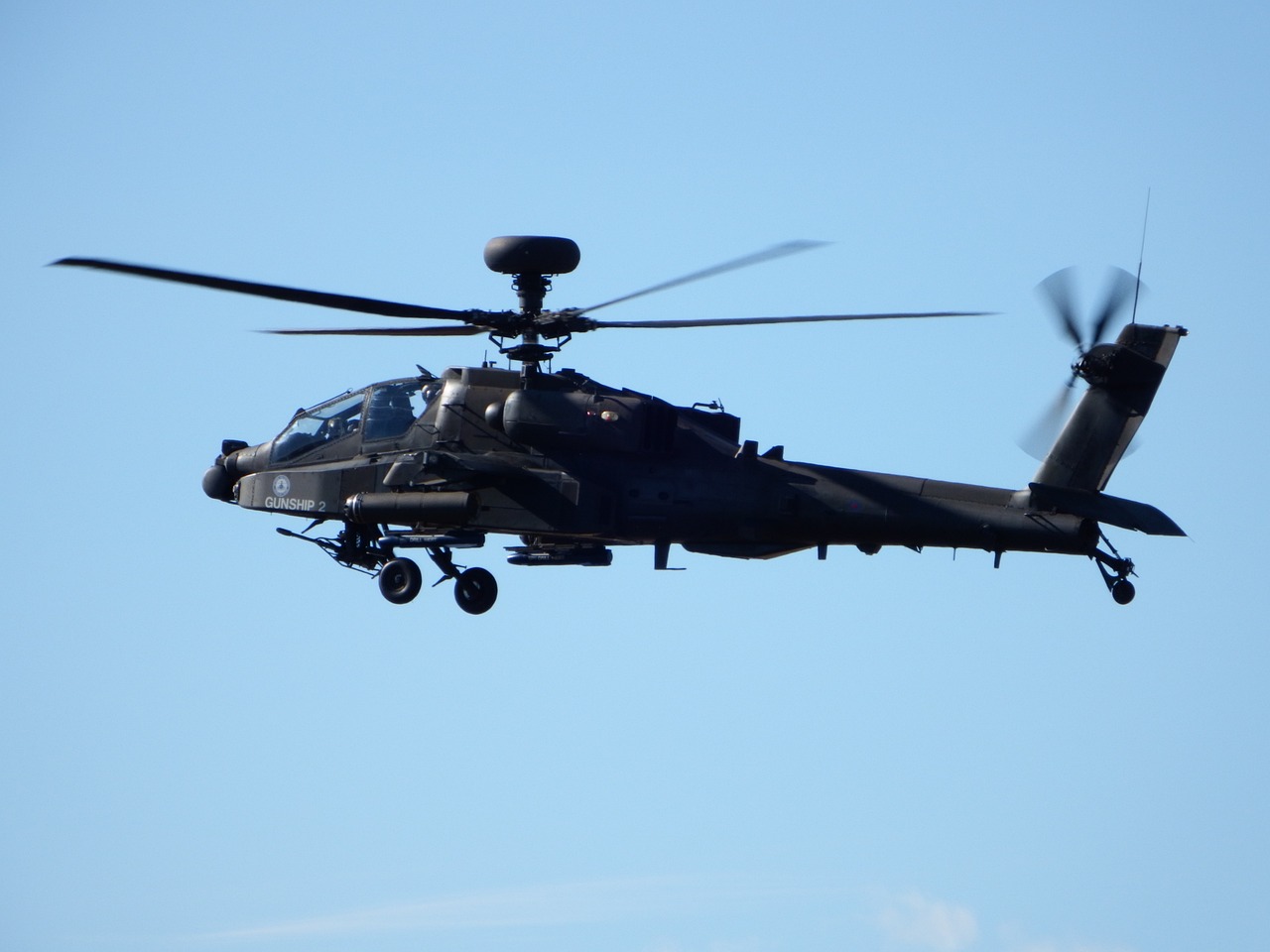
Integration of AI in Military Robotics
The integration of artificial intelligence (AI) into military robotics is not just a trend; it's a seismic shift in how modern warfare is conducted. Imagine a battlefield where robots can analyze data in real-time, make autonomous decisions, and adapt to changing conditions faster than any human could. This is not science fiction—it's happening right now. AI enhances the capabilities of military robots, allowing them to operate with a level of efficiency and precision that was previously unimaginable.
One of the most fascinating aspects of AI in military robotics is its ability to enable autonomous systems. These systems can perform tasks without human intervention, which raises significant questions about command and control. For instance, if a robot identifies a target based on specific criteria, should it engage without waiting for a human operator's approval? This capability can greatly speed up response times, but it also introduces ethical dilemmas. The military must balance the benefits of speed and efficiency with the need for human oversight in critical decisions.
Moreover, AI is revolutionizing how data is processed on the battlefield. Through machine learning, military robots can analyze vast amounts of battlefield data, learning from past encounters to improve their performance. This capability allows for better decision-making and strategic planning. For example, AI can identify patterns in enemy movements or predict potential threats, giving military commanders a significant advantage. The potential applications are vast and include:
- Real-time threat assessment
- Logistics optimization
- Enhanced reconnaissance capabilities
However, it's essential to recognize that the integration of AI is not without its challenges. One of the primary concerns is the reliability of these autonomous systems. What happens if a robot misidentifies a target? The implications of such errors can be catastrophic. Additionally, the reliance on AI introduces potential vulnerabilities, particularly in terms of cybersecurity. Military robots that are connected to networks can be susceptible to hacking, which could compromise their effectiveness and safety.
To navigate these challenges, military organizations are investing heavily in research and development, focusing on creating robust AI systems that can function reliably in high-stakes environments. They are also exploring ways to ensure that human oversight remains a critical component of military operations involving AI. This balance is crucial because, while robots can process information quickly, they lack the nuanced understanding of context that human operators bring to the table.
As we look to the future, the integration of AI in military robotics promises to reshape the landscape of warfare. The ongoing advancements in technology suggest that we are just scratching the surface of what is possible. The military's approach to AI will likely evolve, with an emphasis on developing systems that are not only effective but also ethical and accountable.
- What are the main benefits of integrating AI into military robotics?
AI enhances efficiency, speed, and decision-making capabilities in military operations. - Are there ethical concerns regarding autonomous military robots?
Yes, there are significant ethical dilemmas, particularly regarding accountability and the potential for collateral damage. - How does machine learning improve military robotics?
Machine learning allows robots to analyze data and learn from past experiences, improving their operational effectiveness. - What challenges do military robots face?
Challenges include technical limitations, cybersecurity vulnerabilities, and ethical considerations.

Autonomous Systems
As we venture into the realm of modern warfare, the rise of is nothing short of revolutionary. Imagine a battlefield where machines can make decisions faster than any human could, processing vast amounts of data in the blink of an eye. This is not science fiction; it's the reality we are stepping into. Autonomous systems, equipped with advanced algorithms and artificial intelligence, are designed to operate independently, making them invaluable assets in military operations.
One of the most significant advantages of these systems is their ability to perform tasks without direct human intervention. This capability not only enhances operational efficiency but also reduces the risk to human life. Consider a scenario where an autonomous drone can identify and neutralize threats without waiting for orders from a commander. This level of autonomy can drastically change the dynamics of military engagements, allowing for quicker responses and potentially saving lives.
However, the integration of autonomous systems is not without its challenges. The question of command and control looms large. Who is responsible when a machine makes a mistake? This dilemma raises ethical concerns that military strategists must address. The balance between leveraging technology and maintaining accountability is delicate, and as these systems become more prevalent, the military must establish clear guidelines on their use.
Moreover, while the benefits are substantial, there are inherent risks associated with autonomous systems. For instance, the potential for cybersecurity threats is an ongoing concern. If an enemy can hack into these systems, they could manipulate them for their own purposes, leading to disastrous outcomes. Therefore, ensuring the security of these robotic systems is paramount as we move forward.
In summary, autonomous systems represent a significant leap forward in military technology. They promise to enhance operational capabilities while also posing new challenges that require careful consideration. As we continue to explore the potential of these systems, it is crucial to engage in discussions about their ethical implications and the necessity of robust security measures. The future of warfare may very well hinge on how we navigate these complex issues.
- What are autonomous systems in military applications? Autonomous systems are robotic units that can operate independently without direct human control, using artificial intelligence to make decisions based on data analysis.
- What are the benefits of using autonomous systems in warfare? They enhance operational efficiency, reduce risks to human life, and allow for faster decision-making in critical situations.
- What ethical concerns are associated with autonomous military systems? Key concerns include accountability for decisions made by machines and the potential for unintended consequences during operations.
- How can cybersecurity threats impact autonomous military systems? If hacked, these systems could be manipulated to act against their intended purposes, posing significant risks to military operations.

Machine Learning Applications
In the realm of military robotics, machine learning has emerged as a game-changer, fundamentally altering how data is processed and decisions are made on the battlefield. Imagine a scenario where military robots can learn from their environment, adapt to changing conditions, and make autonomous decisions based on real-time data. This is not science fiction; it’s the reality of modern warfare, where machine learning algorithms are enhancing the capabilities of robotic systems.
One of the most significant applications of machine learning in military robotics is in the analysis of vast amounts of battlefield data. With the ability to process and interpret information at lightning speed, machine learning algorithms can identify patterns and predict outcomes that would be impossible for human operators to discern. For instance, these algorithms can analyze data from sensors and surveillance systems to provide actionable intelligence, enabling commanders to make informed decisions quickly.
Furthermore, machine learning enhances robotic performance through continuous learning and improvement. As robots gather data from their missions, they can refine their algorithms, becoming more efficient and effective over time. This self-improvement mechanism is crucial in dynamic combat environments where conditions can change rapidly. For example, a drone that learns to navigate through complex terrains or a ground robot that improves its bomb disposal techniques can significantly increase mission success rates.
Another fascinating application is in predictive maintenance. By utilizing machine learning, military robots can monitor their own systems and predict failures before they occur. This proactive approach not only extends the lifespan of the equipment but also ensures that robots are operational when they are most needed. Imagine a scenario where a reconnaissance drone can alert its operators about potential mechanical issues, allowing for timely repairs and reducing downtime.
Moreover, machine learning is paving the way for enhanced autonomous systems. These systems can operate independently, making decisions based on the data they collect. This capability is particularly useful in situations where human presence is risky or impossible. For instance, autonomous ground robots can navigate through hostile environments to gather intelligence or perform logistics tasks without putting soldiers in harm's way.
However, the integration of machine learning into military robotics is not without its challenges. There are concerns about accountability and ethical implications, particularly when it comes to autonomous decision-making in combat scenarios. Questions arise about who is responsible if a machine learning algorithm makes a mistake that results in collateral damage. These ethical dilemmas must be addressed as military organizations increasingly rely on these technologies.
In conclusion, the applications of machine learning in military robotics are vast and varied, offering unprecedented opportunities for enhancing operational efficiency and effectiveness. As these technologies continue to evolve, they will undoubtedly reshape the future of military strategies, making it essential for military leaders to stay informed and adaptable in this rapidly changing landscape.
- What is machine learning in military robotics? Machine learning in military robotics refers to the use of algorithms that allow robots to learn from data, adapt to new situations, and improve their performance over time.
- How does machine learning enhance decision-making in military operations? Machine learning processes large volumes of data quickly, identifies patterns, and predicts outcomes, enabling military leaders to make informed decisions rapidly.
- What are the ethical concerns associated with machine learning in warfare? Ethical concerns include accountability for autonomous decisions, the potential for collateral damage, and the moral implications of using robots in combat scenarios.
- Can military robots repair themselves using machine learning? While not fully autonomous in maintenance, machine learning can help robots predict mechanical failures and alert operators for timely repairs, enhancing operational readiness.
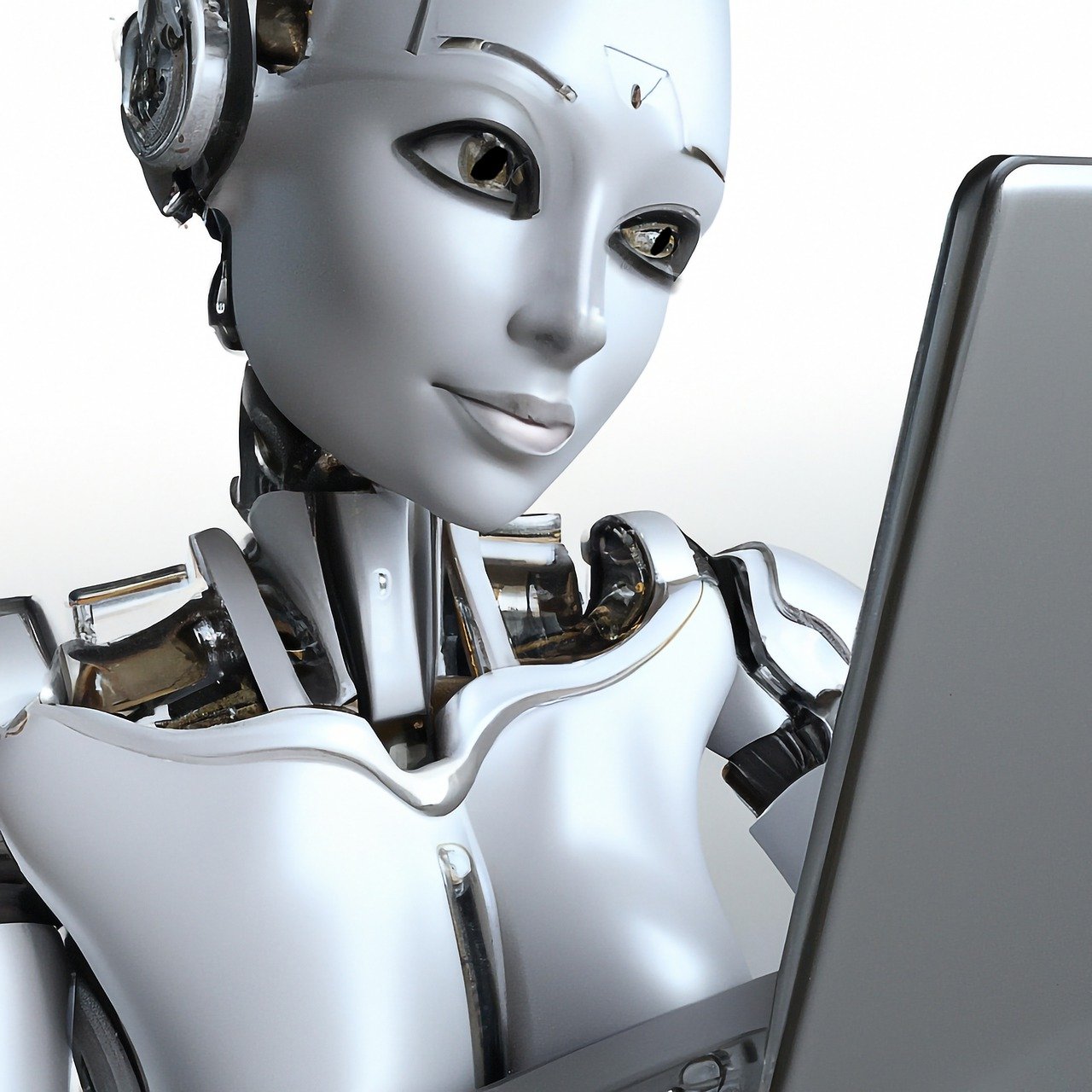
Challenges and Limitations
While the integration of robotic systems into military strategies presents a myriad of advantages, it is essential to acknowledge the that accompany this technological evolution. One of the most pressing issues is the technical limitations that these systems face. For instance, despite significant advancements in robotics, the reliability of these machines in diverse environments remains a concern. Imagine sending a high-tech drone into a storm; its operational capabilities could be severely compromised. Furthermore, the complexity of battlefield conditions means that robots must adapt quickly to unexpected scenarios, which is still a challenge for many current systems.
Another critical aspect is the ethical considerations surrounding the deployment of military robots. The question of accountability arises when autonomous systems make decisions that could lead to loss of life. Who is responsible if a drone mistakenly targets civilians? This dilemma creates a moral quagmire for military strategists. Additionally, the potential for collateral damage raises alarms among human rights advocates and the international community, leading to calls for stricter regulations on the use of robotic systems in warfare.
Moreover, the cybersecurity threats posed to military robots cannot be ignored. As these machines become more interconnected, they also become more vulnerable to hacking and other cyber attacks. A successful breach could turn a sophisticated weapon into a liability, potentially endangering troops and civilians alike. This vulnerability makes it imperative for military organizations to invest heavily in cyber defense mechanisms to protect their robotic assets.
To better understand these challenges, let's take a look at some of the key issues facing military robotics:
| Challenge | Description |
|---|---|
| Technical Limitations | Issues with reliability and adaptability in various environments. |
| Ethical Considerations | Accountability for autonomous decisions and potential for collateral damage. |
| Cybersecurity Threats | Vulnerability to hacking and cyber attacks that can compromise missions. |
As we look to the future, addressing these challenges will be crucial for the successful integration of robotic systems in military operations. The military must not only focus on advancing technology but also on establishing ethical frameworks and robust security measures. Only then can we harness the full potential of these systems while minimizing their risks.
- What are the main challenges of using military robots? The primary challenges include technical limitations, ethical considerations regarding accountability, and cybersecurity threats.
- How do ethical concerns affect military robotics? Ethical concerns raise questions about accountability for autonomous decisions and the potential for collateral damage in combat situations.
- What can be done to mitigate cybersecurity threats? Investing in advanced cybersecurity measures and protocols is essential to protect military robotic systems from hacking and other cyber attacks.
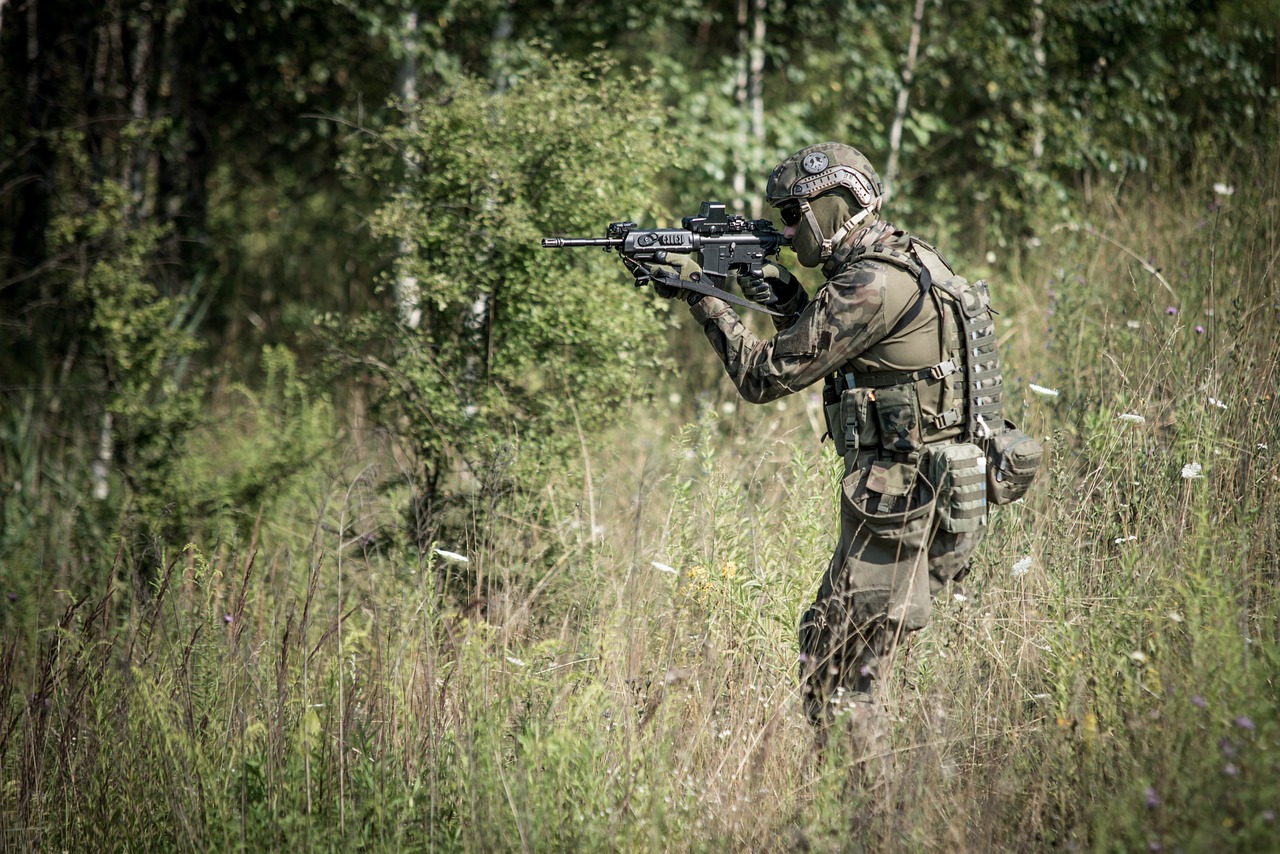
Ethical Considerations
The rise of robotic systems in military operations brings with it a host of ethical dilemmas that demand careful consideration. As we embrace these advanced technologies, we must grapple with questions about accountability, the potential for collateral damage, and the moral implications of deploying machines in combat scenarios. Can a robot truly make life-and-death decisions, or should that responsibility remain firmly in human hands?
One of the most pressing ethical issues is the concept of accountability. If a military robot makes a mistake that results in civilian casualties, who is held responsible? Is it the programmer, the military personnel who deployed the robot, or the machine itself? This ambiguity can create a dangerous precedent, where accountability becomes diluted, making it easier for militaries to engage in actions that they might otherwise reconsider if human lives were directly at stake.
Moreover, the potential for collateral damage is a significant concern. While robotic systems are designed to minimize risks, the reality is that technology is not infallible. Mistakes can happen, and the consequences can be devastating. For instance, a reconnaissance drone may misidentify a target, leading to a strike that harms innocent civilians. This raises fundamental questions about the morality of using machines to make such critical decisions.
Additionally, the dehumanization of warfare is a critical ethical consideration. As robots take on more roles in combat, there’s a risk that military personnel may become desensitized to violence. The emotional distance created by operating machines instead of engaging directly with human adversaries can lead to a troubling mindset where the sanctity of life is diminished. The psychological impact on soldiers who operate these systems must not be overlooked; they may experience guilt or trauma from actions taken by machines they control.
To navigate these ethical waters, it is essential that military organizations establish clear guidelines and protocols for the use of robotic systems. This includes creating frameworks for accountability and ensuring that human oversight remains a key component of military operations involving robots. Furthermore, ongoing discussions about the ethical implications of these technologies should involve a wide range of stakeholders, including ethicists, technologists, military personnel, and the public.
In conclusion, while robotic systems offer remarkable advantages in military operations, their deployment raises profound ethical questions that cannot be ignored. Balancing technological advancement with moral responsibility will be crucial in shaping the future of warfare. As we look ahead, it's imperative to consider how we can ethically integrate these systems into military strategies without compromising our values or humanity.
- What are the main ethical concerns regarding military robots?
The primary concerns include accountability for actions taken by robots, the potential for collateral damage, and the dehumanization of warfare. - How can accountability be ensured in the use of military robots?
Establishing clear guidelines and protocols for the deployment and use of robotic systems, along with human oversight, is essential for accountability. - What impact do military robots have on soldiers' mental health?
Operating robots can lead to desensitization to violence and emotional distance, which may affect soldiers' mental health and lead to feelings of guilt or trauma. - Are there any international laws governing the use of military robots?
Currently, there are no specific international laws solely governing military robots, but existing laws of armed conflict and humanitarian law apply.
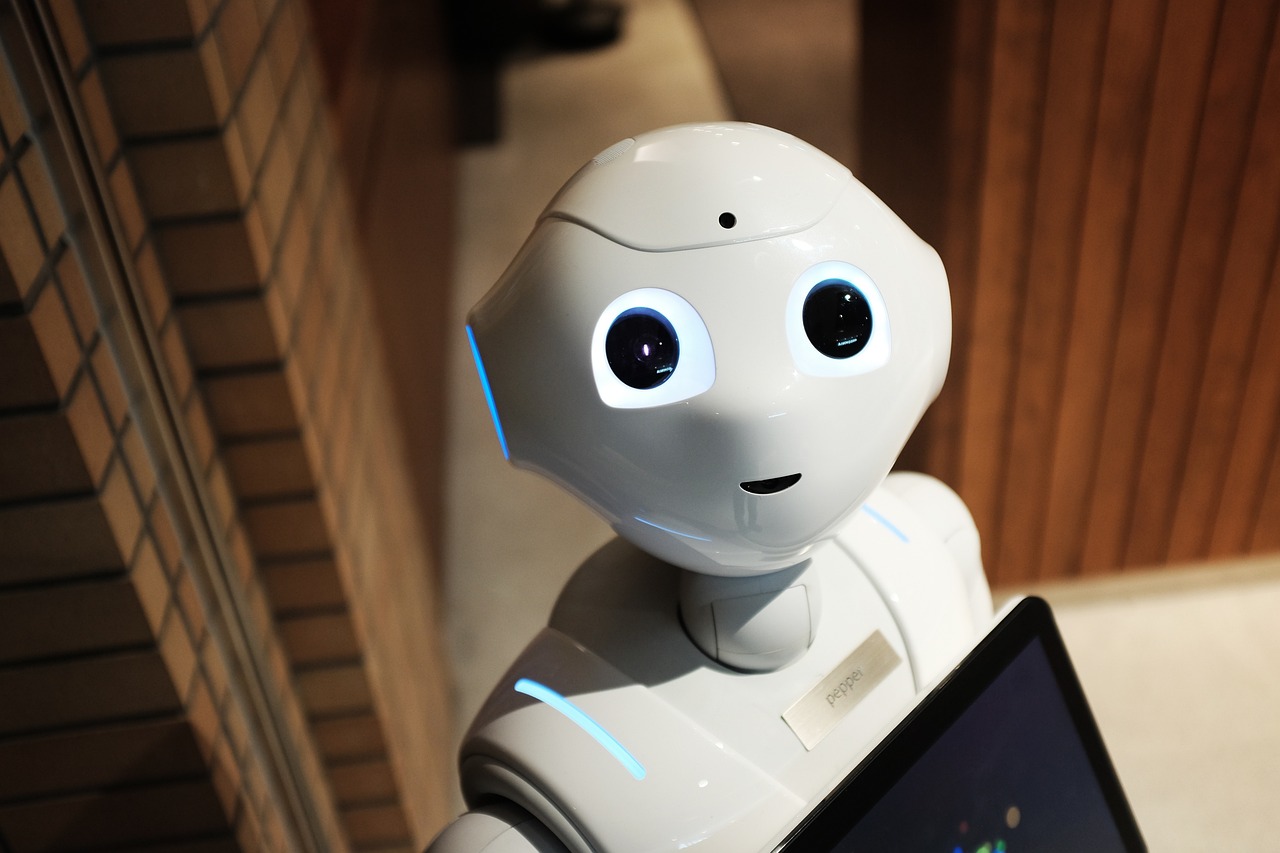
Technical Limitations
While the integration of robotic systems into military strategies presents a new frontier for warfare, it is essential to recognize that these technologies are not without their . One of the most pressing concerns is the reliability of robotic systems in diverse and unpredictable environments. Imagine sending a highly advanced drone into a combat zone, only to have it malfunction due to adverse weather conditions or unexpected terrain. Such scenarios can lead to mission failures, risking not only valuable assets but also the lives of personnel relying on these technologies.
Another significant challenge lies in cybersecurity threats. As military robots become increasingly connected to networks for data sharing and communication, they also become vulnerable to hacking and cyberattacks. A compromised drone or ground robot could be turned against its operators, leading to catastrophic consequences. The military must invest heavily in cybersecurity measures to ensure the integrity and safety of these systems.
Moreover, the complexity of programming these robotic systems can be a double-edged sword. While advanced algorithms and artificial intelligence enhance their capabilities, they also require extensive testing and validation to ensure they function as intended. In the heat of battle, even a minor bug in the software could lead to significant operational failures. This complexity necessitates a dedicated team of experts who can continuously monitor and update these systems, which can strain military resources.
Furthermore, the limitations in sensor technology can hinder the effectiveness of military robots. While many robots are equipped with sophisticated sensors for navigation and target identification, these technologies are not infallible. For instance, poor visibility conditions, such as fog or heavy rain, can severely limit a robot's ability to operate effectively. This reliance on external conditions can be a critical vulnerability in combat scenarios.
To illustrate some of these challenges, consider the following table that summarizes key technical limitations faced by military robots:
| Technical Limitation | Description |
|---|---|
| Reliability | Potential for malfunction in adverse conditions. |
| Cybersecurity | Vulnerability to hacking and cyberattacks. |
| Complexity | Challenges in programming and maintaining systems. |
| Sensor Limitations | Inability to operate effectively in poor visibility. |
In conclusion, while robotic systems are revolutionizing military strategies, their technical limitations pose significant challenges that must be addressed. As we move forward, it is crucial for military organizations to invest in research and development to overcome these hurdles, ensuring that robotic systems can perform reliably and securely in the complex landscape of modern warfare.
- What are the primary technical limitations of military robots? The main limitations include reliability in adverse conditions, cybersecurity vulnerabilities, programming complexity, and sensor limitations.
- How can military organizations address these technical challenges? By investing in research and development, enhancing cybersecurity measures, and continuously testing and updating robotic systems.
- What impact do these limitations have on military operations? They can lead to mission failures, increased risks to personnel, and potential operational inefficiencies.
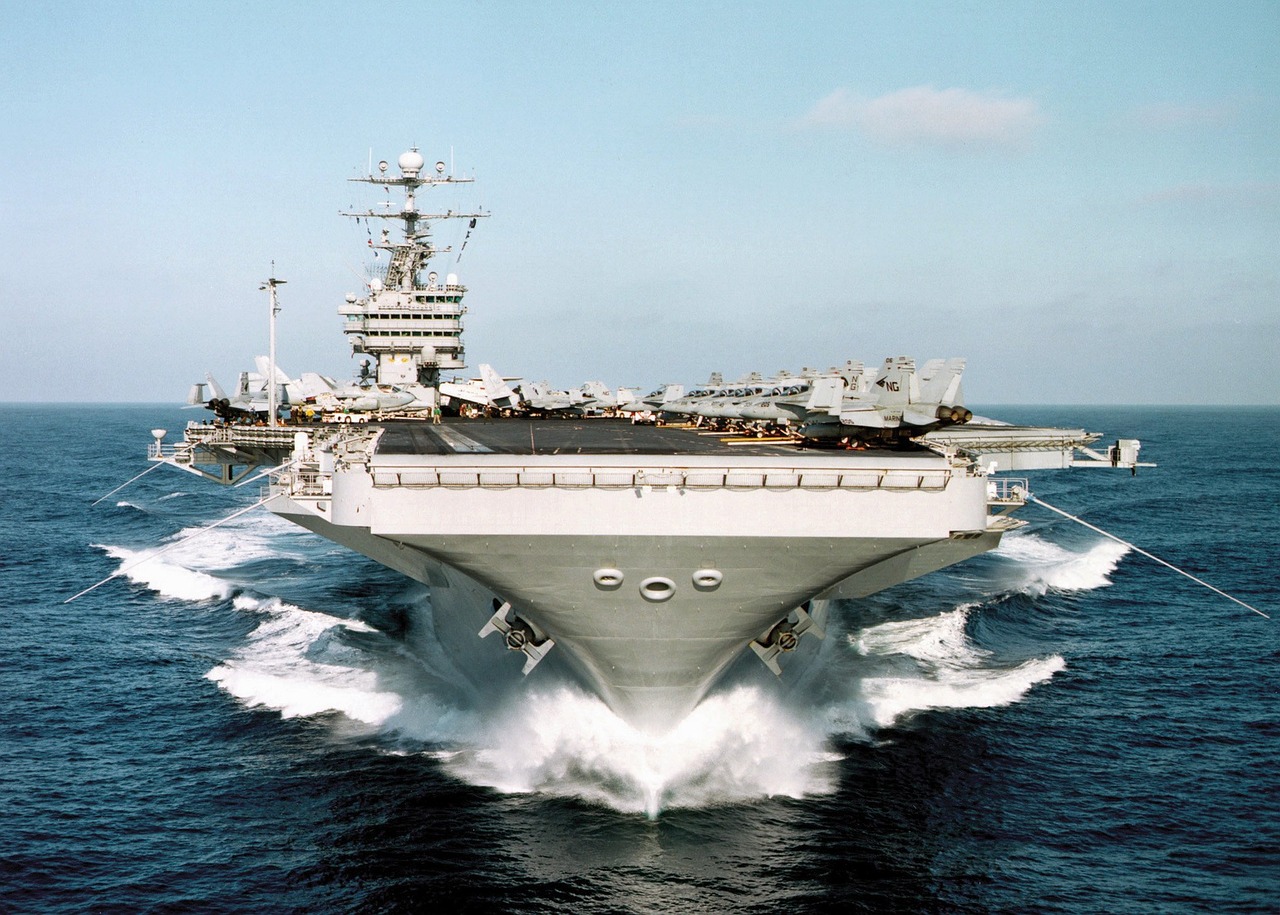
The Future of Military Robotics
The landscape of military operations is rapidly evolving, and at the forefront of this transformation is the integration of robotic systems into military strategies. As we look to the future, it becomes increasingly evident that these technologies will not only reshape how wars are fought but also redefine the very nature of military engagement. Imagine a battlefield where robots and humans work in tandem, each complementing the other's strengths while minimizing risks. This vision is closer to reality than we might think!
Emerging technologies such as artificial intelligence (AI), machine learning, and advanced robotics are set to revolutionize military operations. The future could see the deployment of swarm robotics, where numerous small drones or ground robots work together to accomplish complex tasks. This concept is akin to a flock of birds, where each individual unit acts based on the collective behavior of the group, leading to enhanced efficiency and adaptability on the battlefield.
Moreover, the ongoing advancements in autonomous systems are likely to change the command and control dynamics within military operations. As robots become more capable of making decisions independently, the role of human operators will shift from direct control to oversight and strategic planning. This raises intriguing questions about accountability and the ethical implications of delegating life-and-death decisions to machines.
One of the most exciting prospects is the potential for collaborative human-robot teams. Picture soldiers equipped with augmented reality systems that provide real-time data from drones and ground robots, enhancing their situational awareness. This synergy could lead to faster decision-making and more effective responses to threats. However, it also necessitates rigorous training and adaptation to ensure that military personnel can effectively work alongside their robotic counterparts.
As we explore the future, it’s essential to consider the risks and challenges that accompany these advancements. The integration of robotics into military strategies will not be without its hurdles. Issues such as cybersecurity threats and the potential for technical malfunctions could pose significant risks. Military planners will need to develop robust strategies to mitigate these vulnerabilities, ensuring that robotic systems can operate securely and effectively in high-stakes environments.
In conclusion, the future of military robotics holds immense promise, but it is also fraught with challenges. As we continue to push the boundaries of technology, it is crucial to balance innovation with ethical considerations and operational security. The decisions made today will shape the military landscape of tomorrow, paving the way for a new era of warfare that is as exciting as it is complex.
- What are the primary advantages of using robotic systems in military operations?
Robotic systems can enhance operational efficiency, reduce human casualties, and provide advanced capabilities in surveillance, reconnaissance, and logistics.
- How does artificial intelligence impact military robotics?
AI enables robotic systems to make autonomous decisions, analyze vast amounts of data, and improve their performance in dynamic environments.
- What ethical concerns arise from the use of military robots?
Ethical dilemmas include accountability for actions taken by autonomous systems, the potential for collateral damage, and the implications of reducing human involvement in combat.
- What challenges do military robots face in the field?
Challenges include technical limitations, cybersecurity threats, and the need for reliable communication systems to ensure effective operation in complex environments.
- What does the future hold for military robotics?
The future may see the rise of fully autonomous systems, collaborative human-robot teams, and advanced technologies that will further transform military strategies and operations.
Frequently Asked Questions
- What are military robots and how are they used?
Military robots are automated systems designed for various tasks in defense operations. They can be used for surveillance, reconnaissance, logistics, and even combat. Think of them as the high-tech soldiers of the future, taking on the most dangerous missions without putting human lives at risk.
- How have military robots evolved over time?
The evolution of military robotics has been quite remarkable. From basic automated systems in the early days to today's sophisticated drones and ground robots, technology has dramatically changed the landscape of warfare. It's like watching a sci-fi movie come to life, where robots are now integral to military strategy.
- What types of military robots are currently in use?
There are several types of military robots, including unmanned aerial vehicles (UAVs), ground robots, and underwater drones. Each type has its own unique applications, such as UAVs for aerial surveillance and ground robots for bomb disposal. They're like a Swiss Army knife for the military, versatile and essential in various scenarios.
- What role does artificial intelligence play in military robotics?
Artificial intelligence significantly enhances military robots by enabling autonomous decision-making and improving operational efficiency. Imagine having a robot that can think and adapt to changing conditions on the battlefield—AI is making that a reality and transforming military strategies.
- What are the ethical concerns surrounding military robots?
The use of robots in warfare raises several ethical dilemmas, such as accountability for actions taken by autonomous systems and the potential for collateral damage. It's a complex issue, akin to asking who is responsible when a robot makes a mistake—human operators or the technology itself?
- What challenges do military robots face?
Despite their advantages, military robots encounter various challenges, including technical limitations like reliability and cybersecurity threats. These hurdles can impact their effectiveness in operations, making it crucial for military strategists to address these issues as they integrate more robotics into their forces.
- What does the future hold for military robotics?
The future of military robotics looks promising, with emerging technologies poised to further enhance capabilities. As advancements continue, we can expect to see even more sophisticated systems that could reshape global military strategies and redefine the nature of warfare itself.














